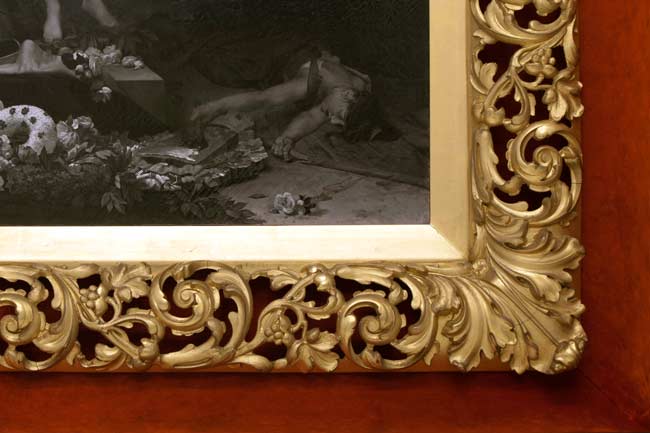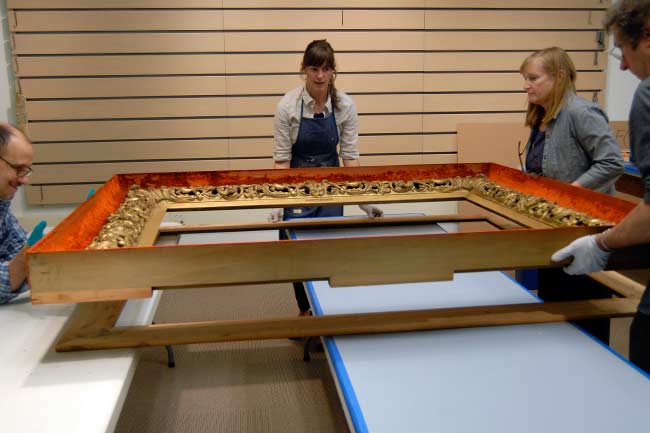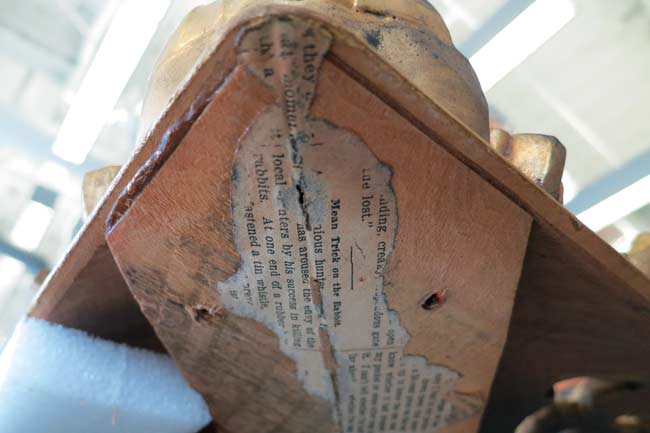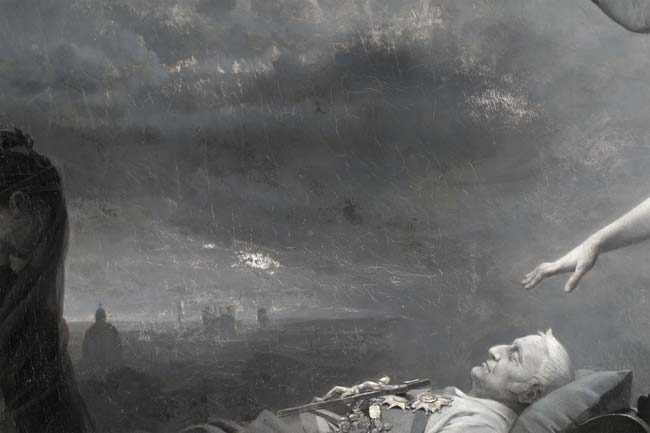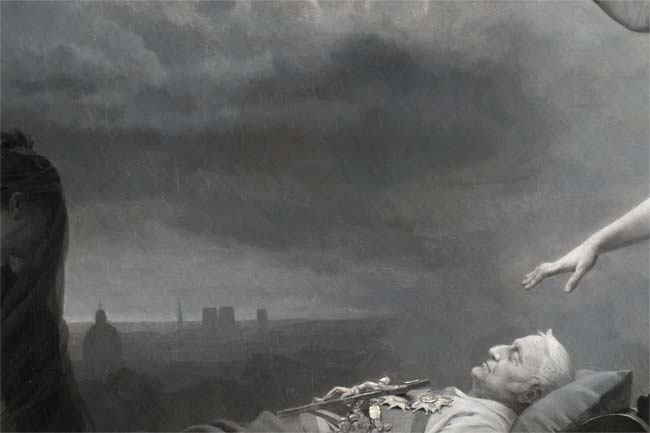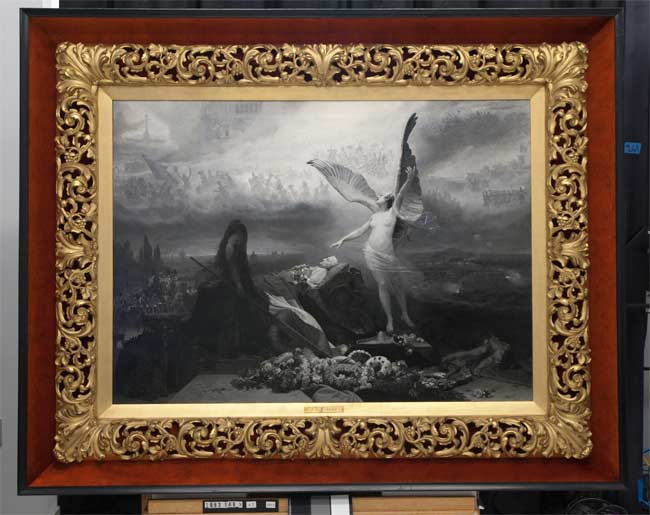Photography was just decades old when the French artist Jehan Georges Vibert painted Apotheosis of Louis-Adolphe Thiers (1877–78). The work’s grisaille style—the use of gray, monochromatic tones to produce a three-dimensional effect—subtly addresses the complex relationship between painting and photography in the 19th century. Harvard Art Museums curator Elizabeth Rudy has been exploring this theme in her research on the work. She’s also been collaborating with conservators to help unlock the painting’s history.
This work, which portrays the death and legacy of Thiers, the president of France’s Third Republic, is not typical of Vibert’s oeuvre. He’s known more for humorous genre scenes (see The Marvelous Sauce) than his treatment of serious subjects. Rudy, Assistant Curator of European Art, wanted to know more about this lesser-known but important aspect of his career, and she began her investigation with Apotheosis. Key to understanding the painting is comparing it to a larger color version housed at the Musée du Château de Versailles, which was shown at the Paris Salon of 1878 and painted in collaboration with Jean Baptiste Édouard Détaille. The smaller one in the Harvard Art Museums collections was done entirely by Vibert. It replicates the color version almost precisely in black and gray tones. At 3 1/2 by 4 1/2 feet, it is anything but diminutive, which makes it dubious as a study; but the reasons for its creation are mysterious. Why did the artist go to the painstaking trouble of reproducing this complex painting in the way he did?
Rudy suggests that Vibert’s characteristic humor is one explanation. “There are playful overtones to the gesture of reproducing his huge canvas in an overblown grisaille replica of his Salon painting.” He painted both Apotheosis paintings in the late 1870s, by which point advancements in photography had made it possible for photographs to compete with prints in terms of scale, changing the market for reproductive images. Both reproductive photographs and prints of Vibert’s large color Apotheosis were sold, each of comparable size. Rudy’s research suggests that the smaller size of Vibert’s grisaille is a nod to the competition between the various modes of reproducing images in the late 19th century—an acknowledgment that is further underscored by the curious frame in which the work was set.
When the museums acquired the Apotheosis in 1963, it came with a unique 19th-century frame: a large velvet-lined black box with a gilded foliate inner frame. It is a large “shadow-box” type, more typically used for small-scale works on paper, including photographs. Having commissioned this atypical frame for the painting, the painting’s prior owners encouraged the grisaille to be seen as relating directly to photography.
To get the frame ready for exhibition, a team of our conservators and collections management staff worked with Rudy and her colleagues in the Division of European and American Art to select an appropriate fabric to replace its disintegrating 19th-century velvet. When they dismantled the frame, they learned how it had been expertly assembled. Examining each piece closely, they noticed scraps of newspaper that had been backing the inside of the carved portion of the frame. Research revealed that the scraps came from an 1896 newspaper based in Warsaw, NY—a detail that allowed Rudy and her colleagues to date the frame, solving one of this object’s many mysteries.
The successful completion of the frame restoration led the research team to turn its focus to the painting, which, before entering our collections, had been covered with layers of varnish that had turned yellow with age. What lay underneath might help Rudy understand Vibert’s process in creating the painting. Dina Anchin, Paintings Conservation Fellow in the Straus Center for Conservation and Technical Studies, cleared surface grime from the painting, reduced the discolored varnish, and reconstructed damaged areas of paint. To aid inpainting, Rudy procured detailed photos of the larger painting in Versailles’ collection, which were critical for Anchin’s reconstructions. Thanks to Anchin’s expert work, “the painting has undergone a dramatic transformation and is again a really beautiful, elegant grisaille,” Rudy noted. “You can really see the underdrawing now and we have a much better understanding of Vibert’s technique and process.”
Soon visitors will be able to see firsthand the results of this exciting research and conservation project. This fall in the new Harvard Art Museums, Vibert’s Apotheosis of Louis-Adolphe Thiers will be located in a gallery that explores the complicated relationship between photography and painting in the second half of the 19th century.
